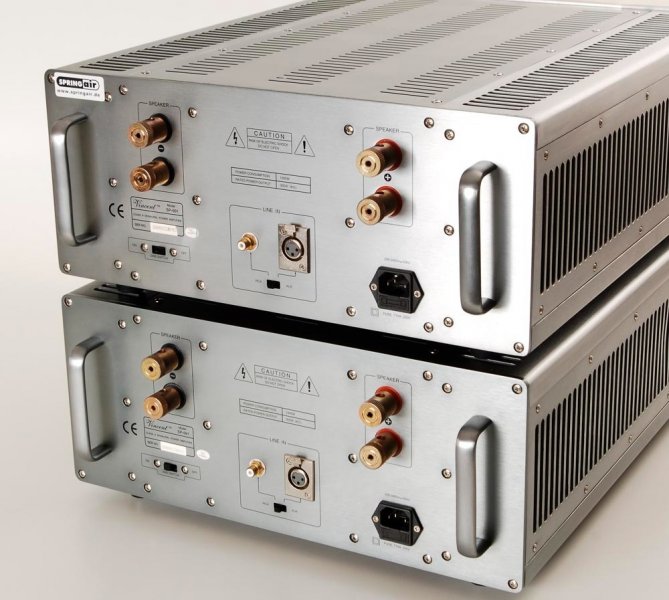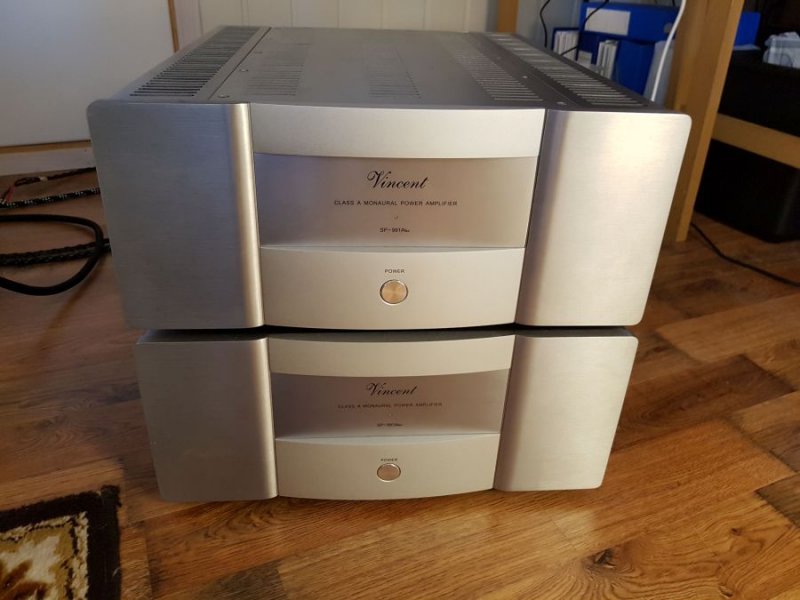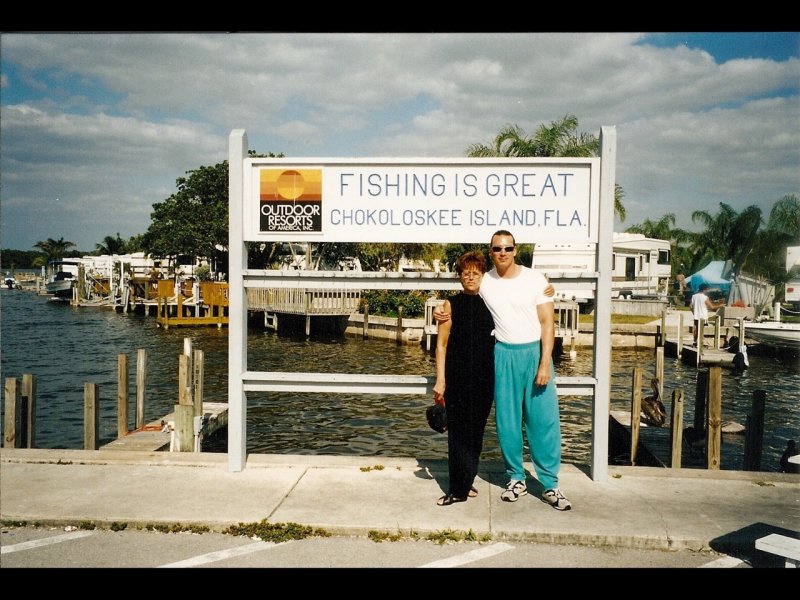I was much more impressed with the Audioplan Konzert III that I heard at Black Forest Audio with both Kondo Gakuoh monos and New Audio Frontiers reference monos (and Silvaweld...which made me fall in love with that brand). Those were great speakers (although not really beautiful) I thought and even worked well with SET.Of course you can't cheat physics, but the kontrapunkt produces 100 dB of sound pressure with 150 watts/8 ohms at a distance of 2.5 meters. If you fill the columns with sand (66cm height) the bass goes down to -3db 45hz. In small rooms up to 20 square meters an astonishing sound pressure. But the real strength of these loudspeakers is location accuracy and the image of the stage, which only very few loudspeakers in this world can do. This is an unfair comparison against a large horn. In a small room I would prefer the kontrapunkt to the horn.the best version is the kontrapunkt series III.
I also listen with large speakers in the bass range, which has the advantage of low deflection and therefore low distortion at high volumes . You can clearly hear what a good deep bass effect has on music. It is the foundation on which the music is built. It contributes significantly to the realism of the performance.
The Devil is in the Detail
- Thread starter dcathro
- Start date
You are using an out of date browser. It may not display this or other websites correctly.
You should upgrade or use an alternative browser.
You should upgrade or use an alternative browser.
Never thought the Vincent gear sounded good despite looking well designed...Vincent d 150 hybrid ecc 88-6h30 voltage gain 2x 1kVa maitransformer ultrastable 190 watt /8 ohm.
We have the same preferences openbaffle and set amps now see my media.
View attachment 118351
The new Cessaro Opus1 is probably a reference speaker for a modest sized room...damn good actually.What amp are you using with your Kontrapunkts? To be honest I’m unlikely to ever go with anything other than high efficiency speakers again or anything other than a SET amp to drive them and I think I just have different preferences but to be honest I’d still have chosen every speaker I’ve bought since the 90’s over the Kontrapunkts but that’s just for me at any rate.
Like thisI was much more impressed with the Audioplan Konzert III that I heard at Black Forest Audio with both Kondo Gakuoh monos and New Audio Frontiers reference monos (and Silvaweld...which made me fall in love with that brand). Those were great speakers (although not really beautiful) I thought and even worked well with SET.
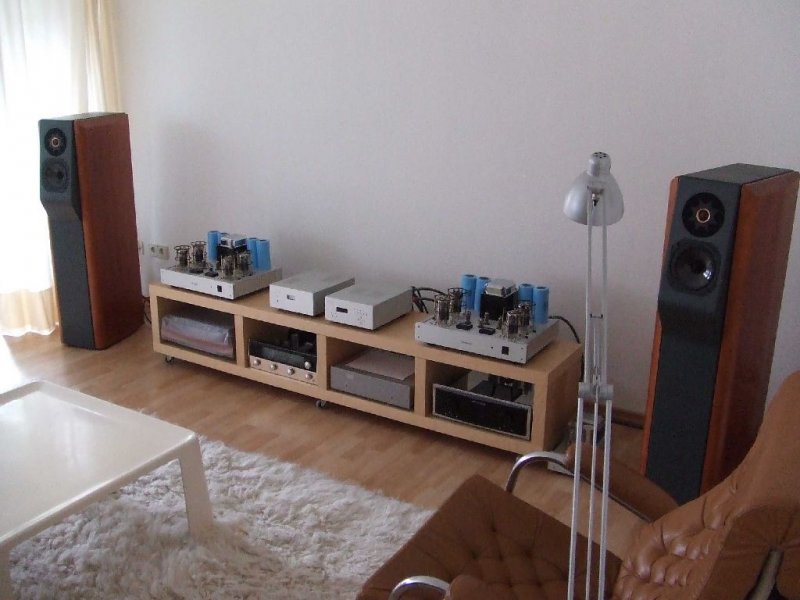
Were those yours? Did you buy my Silvaweld OTL monos? Could it be??? I also had the SWC-1000 preamp...but with dual mono silver contact manual volume controls...not the remote control version. Still have the SWH-650 phonostage...Like thisView attachment 118356
no he is from the analog forum. who infected me with silvaweld. I have swc 1000 remote'/swc 450 pre's and 300b ampWere those yours? Did you buy my Silvaweld OTL monos? Could it be??? I also had the SWC-1000 preamp...but with dual mono silver contact manual volume controls...not the remote control version. Still have the SWH-650 phonostage...
I got infected by frequent visits to Black Forest Audio...then reviewing the SWC-450 and later the SWC-1000 (which I bought). The SWH-650 is, AFAIK, a one-off. It is the circuit of the SWH-450 (a fine little phonostage) but replacing the small, SS power supply with a full blown tube rectified, tube regulated power supply (also with big choke filtering). It really highlights how much the power supply contributes to the sound.no he is from the analog forum. who infected me with silvaweld. I have swc 1000 remote'/swc 450 pre's and 300b amp
I had these same OTLs and frankly they sounded great but were a nightmare to keep biased and then there was the heat...
Really fine sounding pre and amps love that gear.I got infected by frequent visits to Black Forest Audio...then reviewing the SWC-450 and later the SWC-1000 (which I bought). The SWH-650 is, AFAIK, a one-off. It is the circuit of the SWH-450 (a fine little phonostage) but replacing the small, SS power supply with a full blown tube rectified, tube regulated power supply (also with big choke filtering). It really highlights how much the power supply contributes to the sound.
I had these same OTLs and frankly they sounded great but were a nightmare to keep biased and then there was the heat...
Did you ever hear the helix system there at volker kühn?
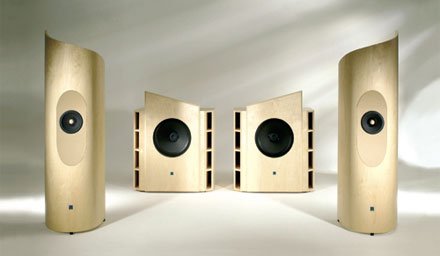
Yes, I have heard it a couple of times. Both times with a full Kondo chain. Very alive souding and direct sound. I am not that fond of the single driver highs though and that would probably be the deal breaker on this system. That said, the Fertin drivers are excellent for the single driver genre. Those big Onken box woofers moved a lot of air!Really fine sounding pre and amps love that gear.
Did you ever hear the helix system there at volker kühn?View attachment 118357
Sad you didn’t offer “or go fishing”Here’s a big one Milan… choice of two… an hour listening to Mahler OR being hog-tied in a room full of people debating audiophile semantics…
I was going to say OR go out fishing with a group of guys who still end up discussing audiophile semanticsI would have jumped at that in a heartbeat. Even took my mom out a couple of times !View attachment 118389
I like the term sharpness!...but I can understand how the word detail could be used.Can’t agree that detail implies dissociation…there is nothing in the definition or in the way it is normally used to suggest this.
I do think detail is misunderstood in audio and there are artifacts in reproduction that are called detail when in fact they are not.
There are phenomena in audio that accentuate leading edges of notes and there are phenomena that truncate the full note development and decay and this leading edge/ lack of decay is often called detail…it is not it is accentuated over the original signal and thus artificial.
They best analogy I can think of from a visual perspective is a sharpness control on a television. Turn this up even a little bit too much and it suddenly looks very artificial and tiring to look at.
A lot of audio does this accentuation and quite a bit of audio in rejection of audio, with the sharpness turned up, deliberately smooths over recorded detail to make a more pleasing sound. This works initially but ultimately grows boring as the other side grows quickly tiring. Truly excellent hifi (a VERY small % of gear out there) gets the balance right and is both pleasing and long term satisfying.
A lot of what we are talking about is audio vocabulary. We aren't always speaking the same language, lol!
Indeed, orchestral recordings are not supposed to be a recreation of a concert in a hall, but a creation in their own unique way of expressing the music. Unfortunately, the main concert hall in Hong Kong sounds flat and diffuse, at least in the audience section. It is not a bad hall for recordings; it is no Kingsway, but the numerous orchestral recordings I made there sound half-decent. I attended a VPO concert at the Theatres de Champs-Elysee in Paris in May. The hall sounded like my system ! It was incredibly dynamic and the sound was very clear and well defined. My iwatch recorded an average SPL of 89dB during the concert, and a peak SPL of almost 100dB from where I sat ! Ouch ! After I got home about a week later, I listened to a recording of one of the pieces on the program, the Prokofiev Romeo and Juliet (Skrowaczewski/Mercury) from a copy of the master tape, and it sounded very similar to my concert experience. The tape was a straight copy from the studio master and therefore has no compression. This was the first time I heard a recording sound so close to the live experience (or vice versa ?). There is a plan to build a new concert hall here, and I hope they will get it right this time.This is exactly my issue with using large orchestral works as a reference for a system sound. 1) They are by necessity heavily compressed in order to fit dynamically onto the recording medium. 2) They are often not representative of what is heard live at most listening positions. 3) Many are "manufactured" performances with lots of cuts and engineers "blending" direct and ambient microphones. 4) The scale of these performance simply makes them not realistic through every stereo on the planet, IMO.
There are a few exceptions, at least for the recording quality, like the recording I have of Prokovfiev's Romeo and Juliet that was captured with a single stereo ribbon microphone (Royer Labs) with minimal EQ and minimal compression. This one truly sounds like a live performance if you were to sit about 20 feet (6m) from the stage. There may be some other minimalist ones out there but none where I also know the conditions of the recording like I do this one.
A small ensemble; on the other hand, can be readily recorded without much manipulation and if you are in an intimate setting, such as a home living room, then it can be quite representative of what is on a recording, which is also likely recorded up close. I have had good success in replicating a live feel with very good string quartet or piano trio recordings, for example, where the presence, detail, dynamics and venue acoustics come through in a convincing fashion.
I believe that today's hi-end audio scene is overly focused on detail, and imaging to it's detriment.
Hi End Vintage systems from the 50's and 60's were more focused on Timing Texture and Tone, whilst the British in the 70's and 80's obsessed about PRAT (Pace Rhythm and Timing).
I think that there is a currently, widely-held view that the better a system is ( and usually more expensive ) the more information inherent in the recording will be produced, leading to more detail, a bigger sounstage, and a better experience.
Coherency and timing go hand in hand. Coherency is obtained when the fundamentals and harmonics of each note are in alignment, giving correct pitch and tone. When the fundamentals and harmonics are out of alignment then the music seems to slow down and we lose coherency, timing, tone and texture, but perhaps gain perceived added detail.
Rather than more detail, I believe we would be better served trying to extract better tone, more texture, and better musical flow and timing.
In my opinion, the obsession with detail and imaging leads to a more intellectual engagement with the music instead of an emotional one.
Here is a quote I like from art Dudley reviewing a Shindo preamp - Some day, listeners who respond to the sound of Shindo gear may help reclaim the art of critical listening from the ninnies who think it has something to do with "locating images in space."
An all time favourite quote of mine attributed to Colin Hammerton was - I don't want to hear where the musicians are on stage. I want to hear why they are on stage (in the late Marus Sauer's excellent think piece "God is in the Nuances").
In my experience, the systems that have timed the best (and are the most coherent) have either been single driver speakers - yes they can have lots of other problems - or simple two way speakers (these can be mini monitors or big horns). The more complex a speaker becomes with more drivers and complex crossover, then the more difficult it seems to keep coherence and timing. My own experience has been that lower (1st and 2nd ) order crossovers are best at this, but that is debatable.
To my ears, the very best systems I have heard have drawn me into the music in such a way that I don't really care whether I am sitting in the sweet spot or not.
A simple test of whether a system is engaging is to listen to it in mono using mono recordings. Without the stereo imaging we are left only with whatever tonality, texture, pace, rhythm and timing that system is able to reproduce that is in the music. If the system is all about detail and imaging, you may find mono recordings to be quite boring.
By the way, I am not meaning to attack people who have modern expensive hi end systems and of course you experience and your goals could be different to mine.
What do you think?
David
Here is a pretty interesting video from the recent Capital Audio Fest in which Jay and OCD Mikey actually discuss OCD's room's system's presentation in terms of degrees of detail. The discussion is towards the end after the 10:30 mark.
Respectfully, why do audiophiles make generalizations when the hobby is deeply, inextricably personal? Good art - regardless of what form it takes - is meant to provoke emotion. IMHO the only metric by which to judge an audio system is emotional engagement that suspends reality and draws you into the artist’s world. I love the quote (and I’m paraphrasing) mentioned earlier: “I don’t care WHERE the musician is, I want to know WHY the musician is there.” But one man’s emotion is another man’s “meh.” That’s just the way it is, for a whole variety of reasons.
Fortunately there are several ways to achieve emotional engagement, including speaker and listening position, that don’t cost anything. Sometimes giving up some imaging or soundstage prowess to achieve a more pleasing tone is all that’s needed to “bring the emotion.”
As my Australian friends like to say, “horses for courses.”
Fortunately there are several ways to achieve emotional engagement, including speaker and listening position, that don’t cost anything. Sometimes giving up some imaging or soundstage prowess to achieve a more pleasing tone is all that’s needed to “bring the emotion.”
As my Australian friends like to say, “horses for courses.”
i think this simplistic viewpoint of choosing detail and excitement or flow and tone/ease/calm is not correct in a broad sense. and my guess from watching just a few minutes of the video (10:00---13:00) is that Jay and Mike are mostly trying to avoid conflict and being overly diplomatic to a degree. do they both actually believe everything they claimed to in the video? i don't normally watch videos, or particularly their video's, so i cannot speak to that part.Here is a pretty interesting video from the recent Capital Audio Fest in which Jay and OCD Mikey actually discuss OCD's room's system's presentation in terms of degrees of detail. The discussion is towards the end after the 10:30 mark.
on the subject of system presentation goals, personally i want it all. all the detail, all the excitement, all the flow, ease, tone and calm. according to the music i choose. i don't want things hyped up, or throttled down. so settling for a system which only can do one, is not for me. and this system building challenge is at the heart of many of our decisions and sweat equity we invest. i want to choose music to match my mood and take my to that place. i don't want my system to restrict me or the music.
maybe depending on the level of investment or effort a person wants to commit, it's easier to choose one way. that's fair. or maybe delegate your decisions to someone else. and if you come from mid fi or low fi and are tired of edgy sounding systems, or boring sounding systems, then wanting mostly peace and easy or mostly detail and excitement can be reasonable.
i think we see growing audiophiles many times go through periods where things look so plain and simple. but then they pass through that stage and get hungry again when their listening satisfaction level decreases. maybe both Jay and Mikey are somewhere in that space.
i think this binary view is absolutely wrong as a basis for viewing a healthy system building process. if followed it will end up pushing people away from the hobby. certainly there are differences in preferences, but to me this is a different thing. within your preferences, you should strive for each recording to be true to what it should be.
musically; how can we evolve and grow and expand our musical horizons when we limit what we hear? part of the delight of our hobby is hearing new music, even new types of music, and exploring down unknown paths. our systems need to be agile enough to go there. this is not a dollars thing, this is a state of mind thing.
Last edited:
Respectfully, why do audiophiles make generalizations when the hobby is deeply, inextricably personal? Good art - regardless of what form it takes - is meant to provoke emotion. IMHO the only metric by which to judge an audio system is emotional engagement that suspends reality and draws you into the artist’s world. I love the quote (and I’m paraphrasing) mentioned earlier: “I don’t care WHERE the musician is, I want to know WHY the musician is there.” But one man’s emotion is another man’s “meh.” That’s just the way it is, for a whole variety of reasons.
Fortunately there are several ways to achieve emotional engagement, including speaker and listening position, that don’t cost anything. Sometimes giving up some imaging or soundstage prowess to achieve a more pleasing tone is all that’s needed to “bring the emotion.”
As my Australian friends like to say, “horses for courses.”
Respectfully, is that not more or less what OCD Mikey is describing and demonstrating with his system? He actually describes his goal, defines it, and seems to think he has achieved it, and it is emotional connection. This seems to be the whole point of his talk. They mention focus on "detail" as sometimes getting in the way of that, which is what I think the message in the Opening Post is all about. I was looking for some show reporting and rooms not covered here, and came across this video of our friends Jay and OCD. I find it rather refreshing.
so do you agree? is this a binary situation as described by these guys? do we have to choose what our system can do and it's only one thing?I find it rather refreshing.
maybe it's refreshing for two Youtube audio guys to play nice? i can see that. but what they are selling i'm not buyng.
Similar threads
- Replies
- 3
- Views
- 1K
- Replies
- 1
- Views
- 487
- Replies
- 33
- Views
- 2K
- Replies
- 2
- Views
- 421
| Steve Williams Site Founder | Site Owner | Administrator | Ron Resnick Site Owner | Administrator | Julian (The Fixer) Website Build | Marketing Managersing |







